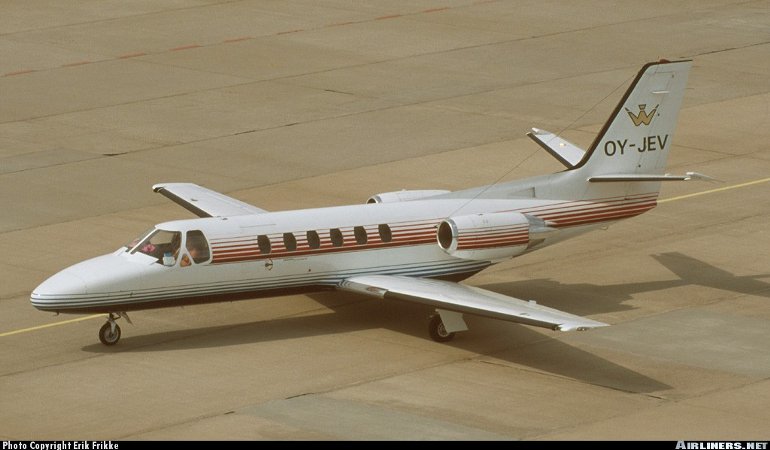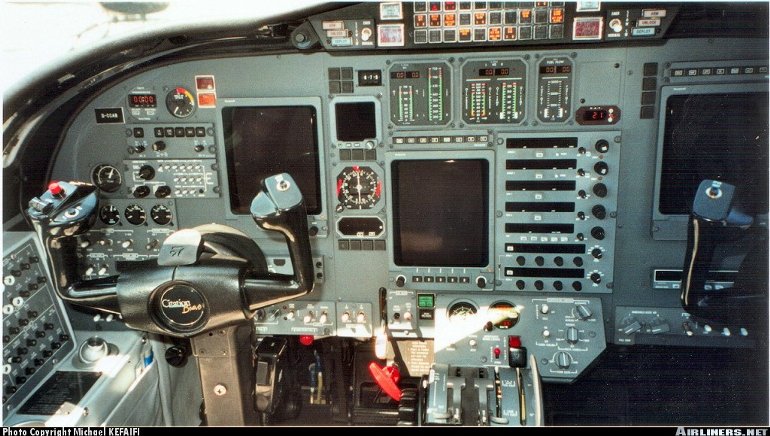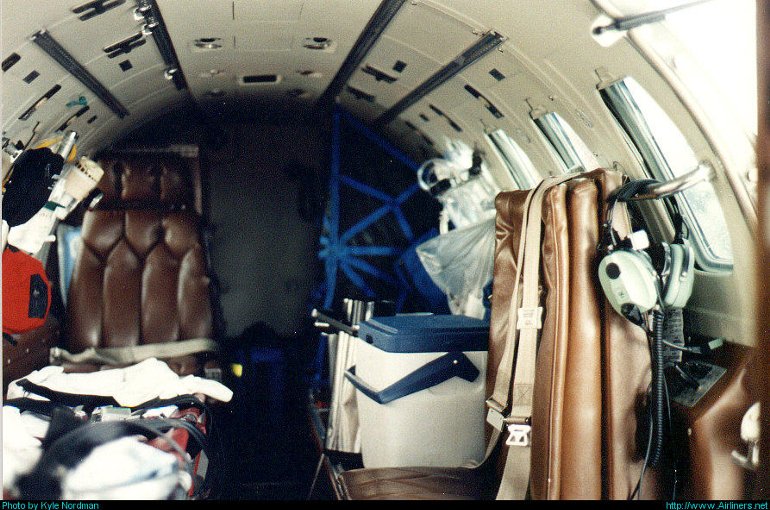Aircraft Technical Data
Cessna Citation II & Bravo



| Details | |
| Country of Origin | United States of America |
| Type | Light corporate jets |
| History | The early success of the original Citation led Cessna to develop a larger capacity Citation model in the mid 1970s. <p>Cessna announced the stretched Citation in September 1976. The fuselage was extended by 1.14m (3ft 9in) to increase maximum seating capacity to 10, while more powerful Pratt & Whitney Canada JT15D4 engines and greater fuel tankage meant higher cruise speeds and longer range. Increased baggage capacity and increased span wings were also added. <p>The new Model 550 Citation II first flew on January 31 1977 and FAA certification for two pilot operation was awarded in March 1978. The II/SP is the single pilot version. <p>Major improvements were made to the design with the arrival of the Model S550 Citation S/II. Announced in October 1983, this improved version first flew on February 14 1984. Certification, including an exemption for single pilot operation, was granted that July. Improvements were mainly aerodynamic, including a new wing designed using supercritical technology developed for the Citation III (described separately), plus JT15D4B turbofans. The S/II initially replaced the II in production from 1984, but the II returned to the lineup from late 1985, and both variants remained in production until the introduction of the Bravo. <p>The Bravo features new P&WC PW530A turbofans, modern Honeywell Primus EFIS avionics suite, a revised interior based on that introduced in the Citation Ultra and other improvements such as trailing link main undercarriage. The Bravo first flew on April 25 1995 and was granted certification in August 1996. First delivery was in February 1997. |
| Powerplants | S/II - Two 11.1kN (2500lb) Pratt & Whitney Canada JT15D4Bs turbofans. Bravo - Two 12.8kN (2885lb) Pratt & Whitney Canada PW503As. |
| Performance | S/II - Cruising speed 746km/h (403kt). Initial rate of climb 3040ft/min. Range with two crew, four passengers and reserves 3223km (1739nm). Range with max fuel 3700km (1998nm). Bravo - Max cruising speed 743km/h (401kt). Max initial rate of climb 3195ft/min. Max certificated altitude 45,000ft. Range with four passengers and reserves 3520km (1900nm). |
| Weights | S/II - Empty equipped 3655kg (8060lb), max takeoff 6850kg (15,100lb). Bravo - Empty 3970kg (8750lb), max takeoff 6715kg (14,800lb). |
| Dimensions | S/II - Wing span 15.91m (52ft 3in), length 14.39m (47ft 3in), height 4.57m (15ft 0in). Wing area 31.8m2 (342.6sq ft). Bravo - Wing span 15.90m (52ft 2in), length 14.39m (47ft 3in), height 4.57m (15ft 0in). Wing area 30.0m2 (322.9sq ft). |
| Capacity | S/II - Flightcrew of two. Main cabin can be optionally configured to seat 10, but standard interior layout for six. Can be configured as an air ambulance with one or two stretchers and up to four medical attendants. Bravo - Standard seating for seven with max seating for 10 in main cabin. |
| Production | 733 Citation IIs built through to late 1994. Bravo deliveries began Feb 1997, over 52 delivered by late 1998. |
| Related Links | Cessna Citation II & Bravo |
The backbone of this section is from the The International Directory of Civil Aircraft by Gerard Frawley and used with permission. To get your own copy of the book click here. |
|








